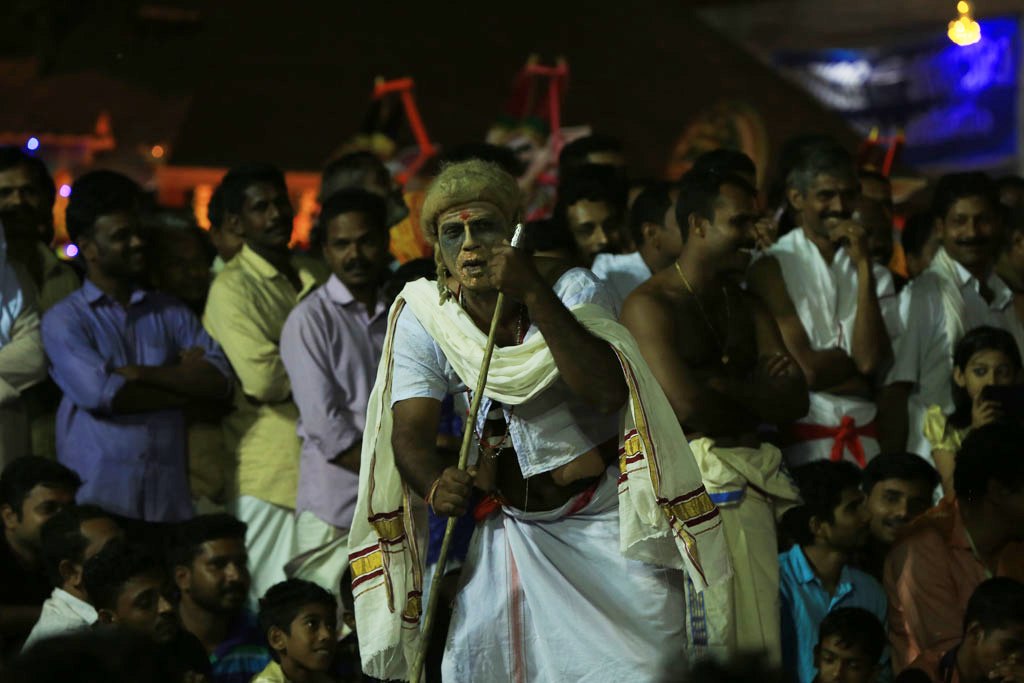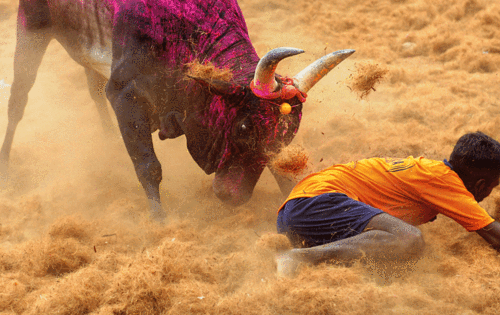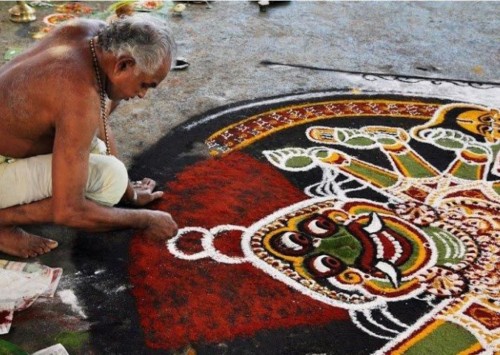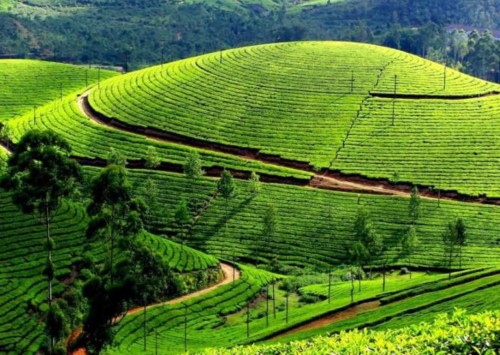Kerala’s Kadammanitta Padayani festival and its many colours
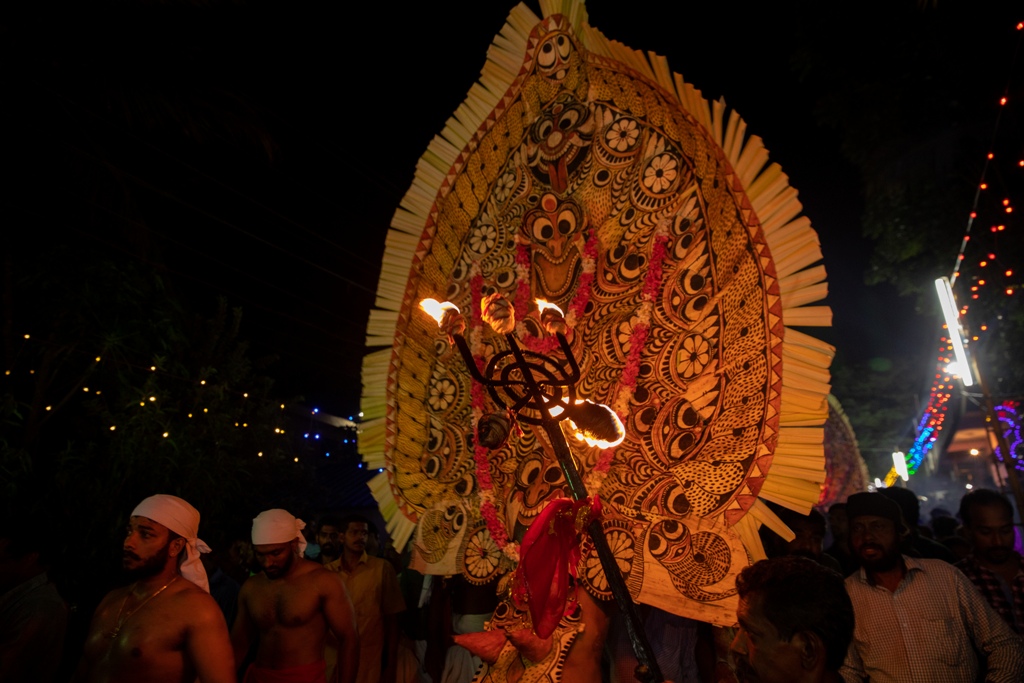
Kadamanitta Padayani is a ten-day long festival celebrated in Kerala during the Malayalam month of Medam
A ten day long, annual festival, Kadammanitta Padayani is celebrated in Kerala during the Malayalam month of Medam. A religious festival, it has come to be popular amongst tourists for its theatrical procession- kolam.
Known for its serene backwaters, lush green landscapes, home-grown spices, and a rich cultural heritage, Kerala is rightly hailed as God’s Own Country.
The south Indian state is famed for its myriad traditional festivals, which are an eclectic blend of music, dance, theatre, satire, facial masks, paintings, and inevitable fun.
One such fiesta, celebrated in the Malayalam month of Medam (time between March-April) is Kadammanitta Padayani. Staged in the Kadammanitta Devi Temple, six kilometres from the town Pathanamthitta, it is a ten day long celebration dedicated to the locally revered goddess Bhadrakali.
A flamboyantly celebrated annual temple festival, Kadammanitta Padayani attracts devotees and tourists from India and abroad, who are particularly charmed by kolam, the festivals theatrical procession besides other celebratory rituals.
Ten days of celebration
The celebration begins by lighting a sacred lamp from the temple – a ritual called chootu vaipu, which is followed by the drumming of traditional percussions thappu and chenda. The following nine days are marked by lively processions in which the artists donning life-size masks, resembling mythological characters perform on traditional Padayani songs. The vibrant masks are an intricate craftwork made of areca spathes and palm leaves arranged creatively.
Traditional and contemporary festivity ritual join hands when the artificial fairy lights as well as the indigenous torches made of dry coconut leaves illuminate the performances. Main attraction of the festival is the eighth day when the various kolam performances- a Ganapathi Kolam, four Marutha Kolams, one Kalan Kolam, eight Yakshi Kolam, Kanjiramala and Bharavi Kolams, are scheduled together. These theatrical musings also have comical interludes with, Pradeshi being the most famous. The festival also incorporates some unique traditions like mounting a Palmyra tree and pushing it down after performing some rituals on the sixth day. The ceremonial dance-Padayani, performed at the festival is a traditional folk dance and a ritual art unique to the former kingdom of Travancore. This flamboyant art form is often regarded as a remnant of the Dravidian forms of worship that existed before the advent of Brahmanism in the state.
Presented in the honour of Bhadrakali, Padayani portrays the story of the goddess winning Daarikan, an evil mythological character.
Preserving the heritage
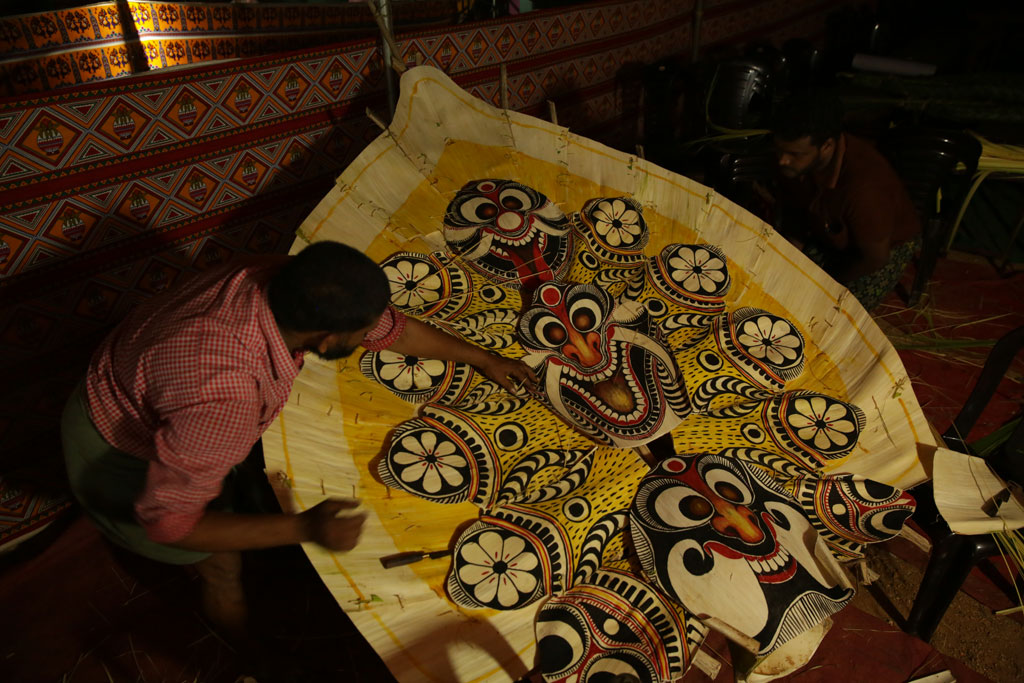
Masks used in the festival, are intricate craftwork made of areca spathes and palm leaves arranged creatively
The locals treasure this larger than life festival. The tourism department of Kerala had an ambitious project-Kadamanitta Padayani Gramam, launched in the year 2010 for the preservation of the temple art- Padyani, which is closely linked to this vibrant festival. The developments under this project, though delayed, have had a significant role in preserving this colourful tradition.
Recently the authorities also recognised the work of Padayani artist Parameshwaram Pillai and awarded him in the name of former Padyani artist Raman Nair Aasan.

